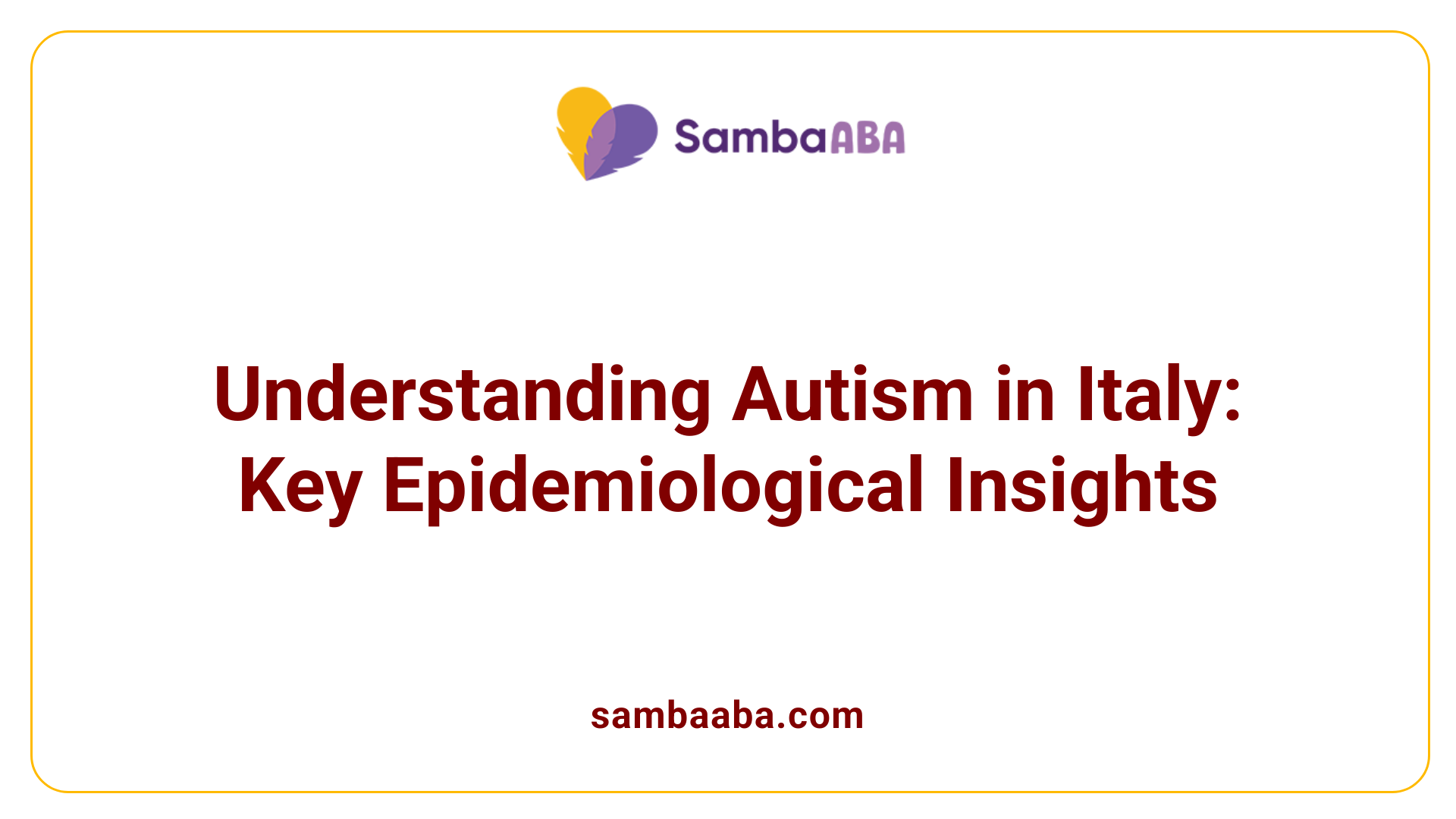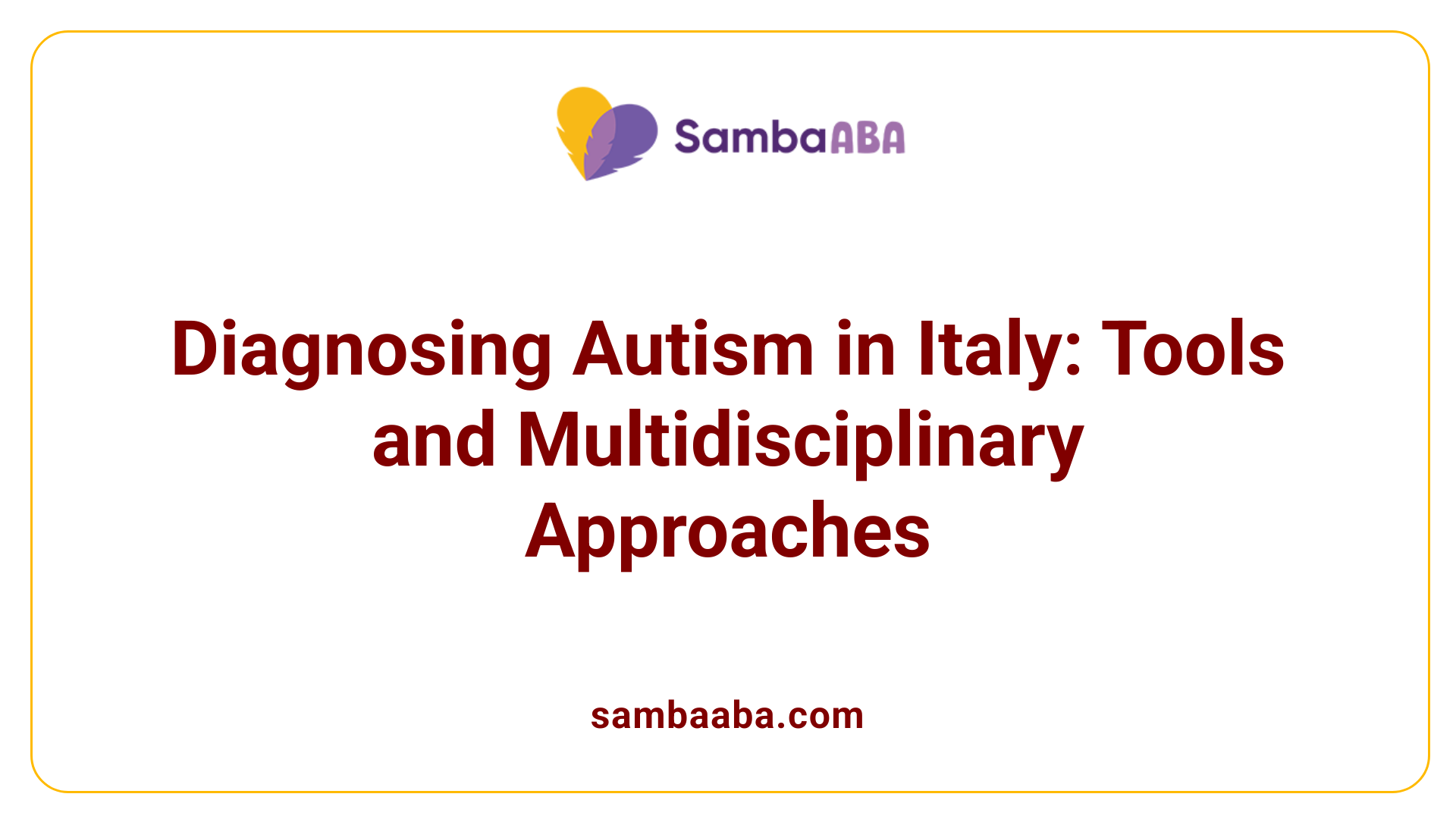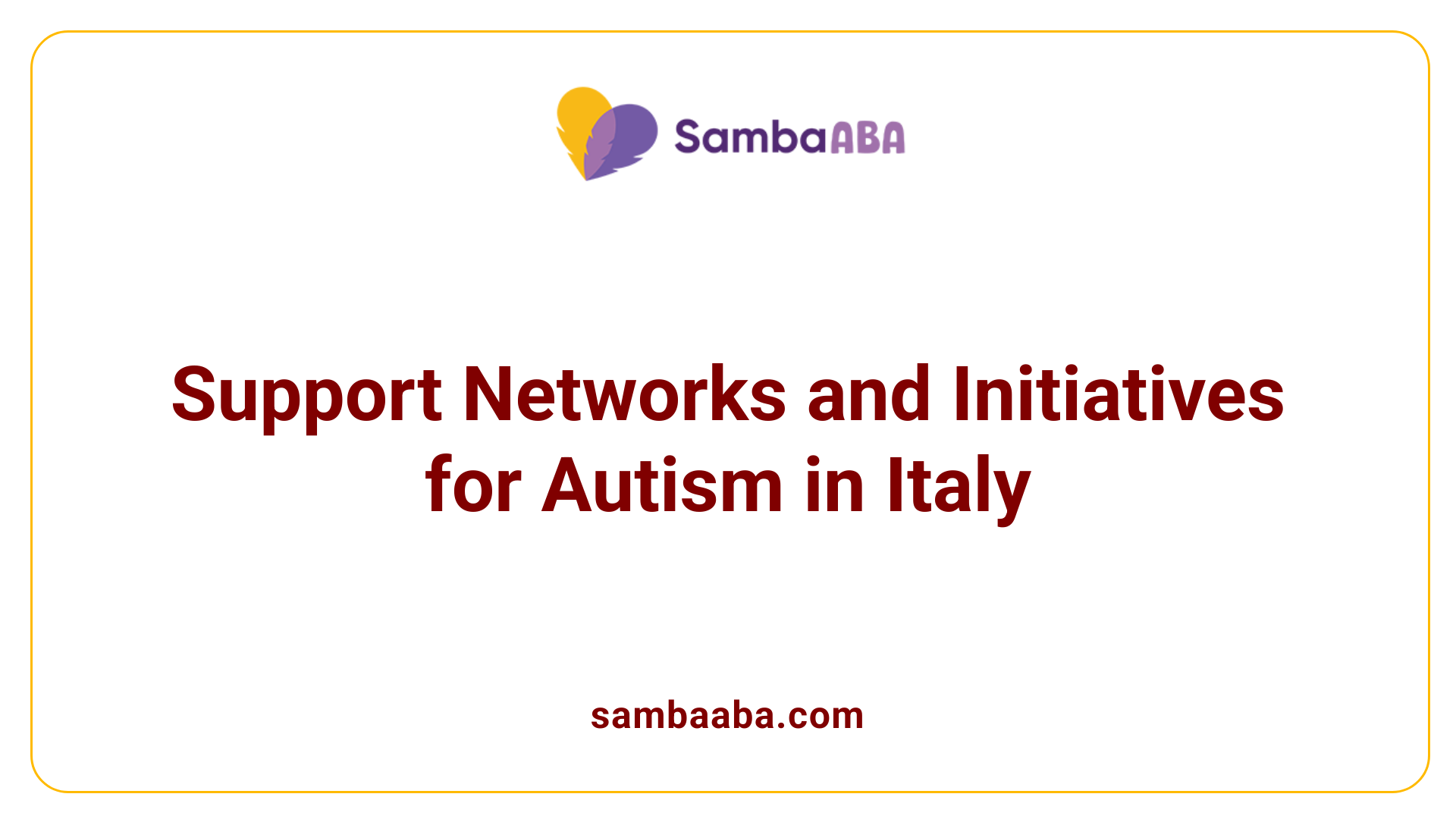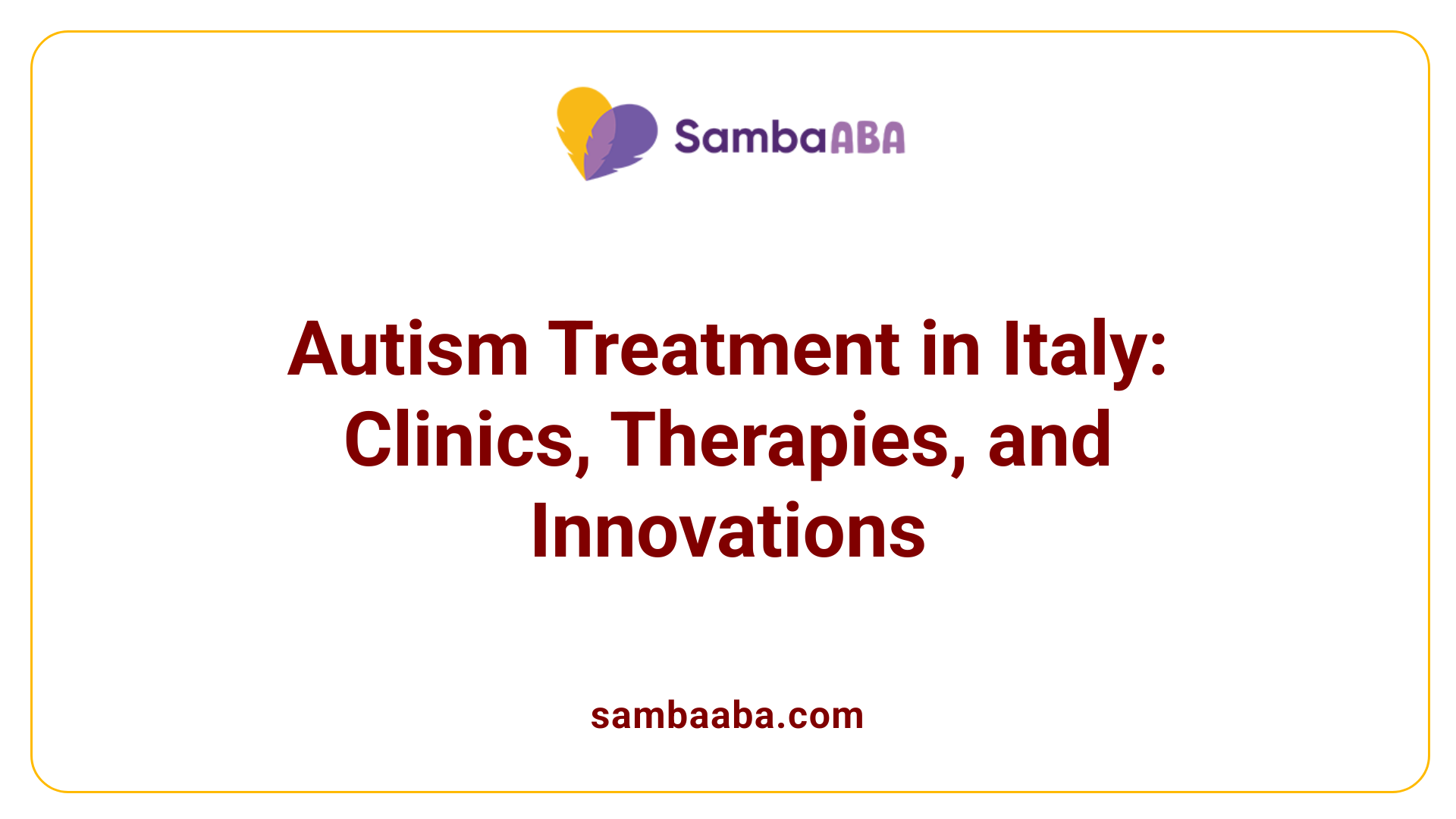Autism in Italy
Understanding Autism in Italy: Prevalence, Services, and Ongoing Initiatives
A Comprehensive Overview of Autism Spectrum Disorder in Italy
Autism Spectrum Disorder (ASD) in Italy presents a complex landscape of prevalence, diagnosis, intervention, and societal awareness. Recent research indicates that approximately 13.4 per 1,000 children aged 7-9 are affected by autism, with a significant male predominance. This article explores the epidemiological trends, diagnostic practices, available support services, treatment options, educational initiatives, and the cultural context shaping autism care and awareness across the country.
Prevalence and Epidemiological Data of Autism in Italy

What is the prevalence of autism spectrum disorder (ASD) in Italy?
A comprehensive study conducted between 2016 and 2018 estimated that about 13.4 children per 1,000 aged 7 to 9 years are affected by ASD in Italy. This figure, with a confidence interval of 11.3 to 16.0, provides a clear picture of the condition's reach within this age group across the country.
Regional distribution and demographic variations
The research spanned Italy’s northern regions (Lecco and Monza-Brianza), central areas (Rome and its province), and southern areas (Palermo and its province). Interestingly, the study found no significant difference in ASD prevalence between urban and rural settings, with rates of approximately 14.2 and 12.4 per 1,000 children, respectively. This indicates that ASD is widespread throughout Italy, regardless of geographical differences.
Gender ratios and comparison with global data
The prevalence among boys was notably higher, with 22.2 per 1,000 children, compared to 5.1 per 1,000 girls. The male-to-female ratio was about 4.4:1, aligning with international findings that autism affects males more frequently. This ratio emphasizes the importance of gender-sensitive approaches in diagnosis and intervention.
Implications for national policy and resource allocation
These findings are crucial for shaping Italy’s health and educational policies. By understanding the prevalence and distribution of ASD, authorities can allocate resources more effectively and develop targeted programs to support affected children and their families. Initiatives like the 'Transform Autism Education' project and enhanced healthcare access aim to improve inclusion and treatment.
| Aspect | Data | Notes |
|---|---|---|
| Overall prevalence | 13.4 per 1,000 | Affected children aged 7-9 in Italy |
| Regional spread | North, Center, South | Uniform distribution across regions |
| Urban vs. rural | 14.2 vs. 12.4 per 1,000 | No significant difference |
| Boys | 22.2 per 1,000 | Higher risk, broader attention needed |
| Girls | 5.1 per 1,000 | Lower but still significant |
| Male-to-female ratio | 4.4:1 | Consistent with global data |
This comprehensive epidemiological overview underscores Italy’s commitment to understanding and addressing ASD’s impact. Continued research and policy efforts will be essential to meet the needs of the growing autistic population.
Assessment Methods and Diagnostic Practices in Italy
 Italy employs a comprehensive approach to diagnosing autism spectrum disorder (ASD), utilizing a range of standardized tools and multidisciplinary evaluations. The main assessment instruments include the Autism Diagnostic Observation Schedule (ADOS-2), Childhood Autism Rating Scale (CARS 2-ST), and the criteria outlined in the DSM-5. These are administered by trained professionals as part of team-based assessments.
Italy employs a comprehensive approach to diagnosing autism spectrum disorder (ASD), utilizing a range of standardized tools and multidisciplinary evaluations. The main assessment instruments include the Autism Diagnostic Observation Schedule (ADOS-2), Childhood Autism Rating Scale (CARS 2-ST), and the criteria outlined in the DSM-5. These are administered by trained professionals as part of team-based assessments.
In addition to these core tools, cognitive evaluations such as the Wechsler Adult Intelligence Scale (WAIS-IV) and Leiter International Performance Scale-3 (Leiter-3) are used to gauge intellectual functioning. Adaptive skills are assessed with instruments like the Vineland Adaptive Behavior Scale II and the Adaptive Behavior Assessment System II (ABAS-II). For support needs and severity assessment, scales like the Support Intensity Scale (SIS) are often employed.
Regional practices may vary somewhat, with some areas incorporating neuroimaging or genetic testing to complement behavioral assessments. Italian guidelines emphasize a multidisciplinary methodology that involves developmental history, caregiver interviews, and clinical observations to ensure a thorough understanding of each child's profile.
Early and precise diagnosis is a priority, aimed at enabling personalized intervention strategies. Most assessments involve a team of psychologists, neurologists, speech therapists, and other specialists working together to provide a detailed picture of the child's strengths and challenges. This approach fosters tailored support plans that adapt over time as needed.
The focus remains on ensuring assessments are culturally sensitive and accessible, which is crucial given Italy's regional differences in healthcare and diagnostic resources.
| Assessment Tools | Used For | Additional Details |
|---|---|---|
| ADOS-2 | Autism diagnosis | Semi-structured, standardized observational assessment |
| CARS 2-ST | Severity estimation | Based on clinical observation and caregiver report |
| DSM-5 Criteria | Diagnostic standards | Internationally recognized criteria |
| WAIS-IV | Cognitive development | Intellectual functioning measurement |
| Leiter-3 | Non-verbal IQ | Suitable for children and non-verbal individuals |
| Vineland-II | Adaptive behavior | Daily living skills and socialization |
| ABAS-II | Adaptive skills | Functional daily behaviors |
| SIS | Support needs | Levels of assistance required |
For further details, researching topics like 'Autism diagnosis Italy assessment tools' and 'Multidisciplinary autism evaluation Italy' can provide more specialized information.
Support Services, Organizations, and Foundations for Autism in Italy
 Italy offers a variety of support services and organizations dedicated to assisting individuals with autism and their families. Universities such as Sapienza University of Rome play a role in fostering community support through initiatives like Auto Mutuo Aiuto (AMA), which creates support groups specifically for autistic students. These groups are led by trained autistic individuals, providing a safe environment for sharing experiences.
Italy offers a variety of support services and organizations dedicated to assisting individuals with autism and their families. Universities such as Sapienza University of Rome play a role in fostering community support through initiatives like Auto Mutuo Aiuto (AMA), which creates support groups specifically for autistic students. These groups are led by trained autistic individuals, providing a safe environment for sharing experiences.
Several non-profit organizations are active across the country. For example, Autismo Italia, AIPA, and Fondazione Italiana per l'Autismo work to raise awareness, offer guidance, and organize training sessions and support networks. Their efforts aim to improve understanding and inclusion for people with autism.
Regional projects such as 'Autism Friendly' in Prato aim to promote social integration. These initiatives focus on engaging local businesses and institutions, making public spaces more welcoming and accessible for autistic individuals. Such programs help foster community acceptance and support.
Moreover, Italy has specialized clinics and hospital services in major cities, including Milan, Rome, and Turin. These centers provide comprehensive diagnostic, therapeutic, and rehabilitative services. Hospitals like Ospedale San Raffaele and Villa Stuart are equipped with advanced neurological treatments tailored for autism care.
Collectively, these organizations and initiatives form an extensive network that supports autistic individuals throughout Italy, promoting inclusion, providing care, and advancing research.
Treatment Options and Specialized Clinics in Italy

What treatment options, clinics, and therapies are available in Italy for autism?
Italy offers a broad spectrum of autism treatment avenues tailored to individual needs. Classic behavioral therapy methods like Applied Behavior Analysis (ABA) are widely implemented in specialized clinics, aiming to improve social skills, communication, and adaptive behavior.
In addition to behavioral interventions, medical treatments play a vital role. Medications are prescribed to manage symptoms such as irritability, hyperactivity, or anxiety. For some cases, neuromodulation techniques such as transcranial magnetic stimulation (TMS) or transcranial direct current stimulation (tDCS) are used, targeting neural pathways to enhance cognitive functioning.
Innovative approaches, including stem cell therapy, are also being explored. This treatment involves the infusion of mesenchymal stem cells via intravenous or intrathecal routes to potentially promote neural repair and reduce inflammation. The cost for stem cell therapy ranges from approximately €8,000 to €22,000, depending on the treatment protocol.
Italy features advanced medical facilities and clinics providing comprehensive assessments and treatments. Notable centers include:
| Clinic/Hospital | Location | Specialties and Services | Certification/Notes |
|---|---|---|---|
| Ospedale San Raffaele | Milan | Diagnostics, neurology, personalized therapies | International standards, high research output |
| GVM Health Group | Rome | Multidisciplinary autism and neurological treatments | Renowned private healthcare network |
| Istituto di Neuroscienze | Fidenza (Emilia Romagna) | Diagnostic services, therapies, clinical trials | ISO 9001 certification, research focus |
Modern technology aids significantly complement therapies. Devices like Tobii Dynavox support communication for non-verbal children, facilitating expressive language development. Personalized treatment planning leverages detailed clinical assessments, family input, and multidisciplinary team expertise.
Overall, Italy provides a range of high-quality, scientifically grounded options for autism treatment, catering to both children and adults. By integrating clinical excellence with innovative therapies and technology, the country strives to meet diverse needs across its regions.
Educational and Policy Initiatives Supporting Autism in Italy
Italy has implemented a range of educational and policy initiatives aimed at supporting individuals with autism spectrum disorder (ASD) and promoting inclusive practices across the country. The Italian government provides dedicated funding and has established legislation that emphasizes the importance of supporting autistic children within the education system. These policies facilitate the integration of autistic pupils by ensuring access to specialized support teachers and tailored educational services.
A significant development is the European project 'Transform Autism Education,' led by the Università Cattolica in collaboration with other European nations such as Great Britain and Greece. This initiative focuses on enhancing teacher training, developing resource materials, and fostering inclusive classroom environments. Specifically, in Italy, the project involves monitoring teacher attitudes and creating training modules aligned with classroom needs, thereby improving the quality of education for autistic students.
Italy also participates in broader European collaborations aimed at advancing autism awareness and education. These initiatives promote cross-national sharing of best practices and the development of standardized training to improve inclusivity and understanding within schools.
Beyond the academic sphere, public awareness campaigns and events are regularly organized to educate the Italian society about autism. These campaigns aim to dispel myths, foster acceptance, and encourage community involvement. Such efforts help reduce stigma and promote social acceptance for individuals with ASD.
While Italy's autism diagnosis prevalence mirrors that of other Western nations, the country faces ongoing challenges related to resource distribution. Regional disparities mean that access to diagnostic, therapeutic, and inclusive educational services can vary significantly. Nonetheless, the country’s commitment to aligning with international standards—through comprehensive assessment protocols, early intervention strategies, and collaborative European initiatives—positions Italy as an active participant in advancing autism support and inclusion.
Progress, Challenges, and the Way Forward in Autism Care in Italy
Italy has made significant strides in understanding, diagnosing, and supporting individuals with autism, with a robust framework of research, services, and awareness initiatives. Nevertheless, regional disparities, lengthy diagnostic processes, and inconsistent access to therapy highlight ongoing challenges. Strengthening national policies, increasing resource allocation, and fostering community-based programs are essential to ensure that every autistic individual in Italy receives timely diagnosis, effective intervention, and inclusive education. Continued international collaboration and cultural shifts towards acceptance will underpin Italy's journey to becoming a truly autism-friendly nation.
References
- Autism spectrum disorder prevalence in Italy: a nationwide study ...
- Autism spectrum disorder prevalence in Italy: a nationwide study ...
- Autism spectrum disorder prevalence in Italy: a nationwide study ...
- Who we are - Fondazione bambini e autismo
- World Autism Day: Italy and the U.S. Share the Battle, But Vary the ...
- About AutismService
- Top Clinics in Italy for Autism Treatment | Prices & Verified Reviews
- Transforming Autism Education - Cattolica International
- Embracing and rejecting the medicalization of autism in Italy
- Autism and university: self-help groups | Sapienza Università di Roma
